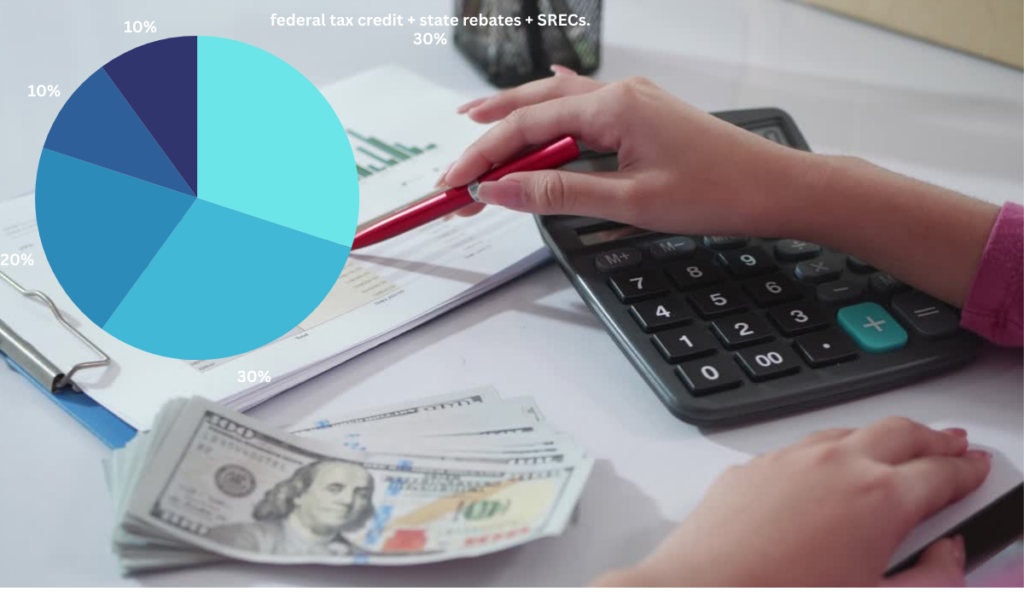Rising electricity bills or pricey solar panels? The battle between solar power and traditional electricity boils down to one question: Which costs less in the long run? Spoiler: It’s not just about monthly bills. From tax credits to hidden fees, we break down the real numbers—so you can decide where your money’s better spent.
Cost Comparison

Solar panels come with a hefty upfront cost—typically $15,000 to $25,000 before incentives. But federal tax credits can cut that by 30%, and some states offer extra rebates. Traditional electricity has no upfront cost, but your monthly bill will keep climbing.
Utility rates rise 3-5% yearly. A 150/month bill today could hit 2,400+ annually in 10 years, totaling over $23,000. Solar, on the other hand, locks in your energy costs after installation, saving you thousands long-term.
The ROI timeline for solar is usually 8-9 years. After that, you’re looking at 15+ years of free energy. Plus, solar increases your home’s value and can earn you credits through net metering.
While solar’s upfront cost is intimidating, it’s essentially pre-paying your electricity at a fixed rate. Sticking with the grid means signing up for ever-rising bills. If you’re staying put for 5+ years, solar’s a smart financial move.
Hidden Costs

Solar panels don’t need much maintenance. A good rain might clean off the dust, but if you live in a dry or dusty area, a quick rinse every few months helps. If you hire a professional, expect to pay around $150 to $300 per visit.
If your area sees frequent power outages or high electricity rates during peak hours, a battery can be a game-changer. A home battery system costs between $7,000 and $15,000, but it gives you backup power and savings during peak rate periods.
Inverters work hard to convert solar energy into usable electricity, but they don’t last forever. Most need replacing every 10-15 years, costing $1,000 to $3,000. Factor this into your long-term solar plan.
Electricity rates are climbing, often by 2-5% per year. If you’re tired of unpredictable bills, solar lets you take control. Instead of worrying about rate hikes, you can enjoy stable energy costs for decades.
How Tax Credits and Rebates Slash the Cost of Solar by 30% (or More)

Solar energy might seem like a big investment, but thanks to government incentives, the cost can drop significantly. Between federal tax credits, state rebates, and local incentives, homeowners can save 30% or more on installation costs.
The Investment Tax Credit (ITC) lets homeowners deduct 30% of their solar installation costs from their federal taxes. If you install a $20,000 solar system, you could receive a $6,000 tax credit, making your out-of-pocket cost much lower.
Many states offer cash rebates or performance-based incentives that further reduce costs. For example:
- California’s Self-Generation Incentive Program (SGIP) offers rebates for battery storage.
- New York’s NY-Sun Program provides direct discounts on solar installations.
- Texas and Florida have utility-based solar incentives that lower upfront costs.
In some states, homeowners can earn SRECs for the energy their solar system generates. These credits can be sold to utility companies, providing extra income that helps offset installation costs.
Many states waive sales tax on solar purchases, saving 5-10% instantly. Some areas also offer property tax exemptions, meaning your home value increases with solar, but your tax bill doesn’t.
With net metering, excess energy from your solar panels gets sent back to the grid, and you receive bill credits in return. This reduces or even eliminates monthly electricity costs.
Renters vs. Homeowners: Who Gets Stuck Paying More for Electricity?
Electricity costs can be a burden for both renters and homeowners, but who pays more in the long run? Let’s break down the key differences and why renters often end up with higher bills.
Homeowners have the advantage of installing solar panels, upgrading insulation, and using energy-efficient appliances. These investments lower electricity bills over time. With net metering and tax credits, many homeowners cut their energy costs significantly.
Most renters rely on their landlord for energy efficiency upgrades—or lack thereof. Many rental properties have older appliances, poor insulation, and no access to solar energy. This means higher electricity bills for tenants who have little control over efficiency improvements.
When utility companies raise rates, homeowners with solar or energy-efficient homes feel the impact less. Renters, on the other hand, must pay the full increase without the ability to offset costs with solar power or energy-saving home improvements.
Some landlords include electricity in rent, but they often set a flat rate based on higher estimates. In these cases, energy-conscious renters may end up overpaying compared to what they would if they paid their own utility bill.
- Homeowners: Pay upfront for solar and efficiency upgrades but save big over time.
- Renters: Typically face higher monthly bills with no way to reduce them.
- Look for energy-efficient apartments with LED lighting and modern appliances.
- Ask landlords if they offer smart thermostats or solar energy options.
- Use energy-saving habits like unplugging devices and running appliances during off-peak hours.
Why Your Electric Bill Will Double in 10 Years (and How Solar Fixes That)
If you think your electricity bill is high now, just wait—it could double in the next 10 years. Rising energy costs, grid maintenance, and inflation are driving annual rate hikes of 2-5%, and in some areas, even higher. But there’s a way to fight back: solar energy.
Why Are Electricity Rates Climbing?
- Utility Infrastructure Upgrades: Power companies pass the cost of grid repairs and upgrades to customers.
- Fuel Price Volatility: As natural gas and coal prices fluctuate, so do your electricity bills.
- Increased Demand: As more people use electricity for home offices, EVs, and smart devices, demand surges, driving up prices.
- Regulatory Changes: Government policies and clean energy mandates can lead to higher costs from utility companies.
How Much Will Your Bill Increase?
According to the U.S. Energy Information Administration (EIA), electricity prices have risen nearly 50% in the last 20 years. If this trend continues, your monthly bill could double within the next decade—even if your energy use stays the same.
How Solar Locks in Lower Costs
Unlike utility rates, solar power offers a fixed cost for decades. Here’s how:
- Federal Tax Credits & Rebates slash installation costs by 30% or more.
- Net Metering lets you earn credits for extra energy sent to the grid, reducing your bill.
- Energy Independence means no more relying on unpredictable utility prices.
Conclusion
The choice between solar power and traditional electricity hinges on a balance of immediate costs versus long-term savings. While solar panels demand a significant upfront investment, federal tax credits, state rebates, and net metering can slash expenses by 30% or more, accelerating the return on investment. Homeowners who install solar not only lock in stable energy costs for decades but also gain energy independence, shielding themselves from utility rate hikes that could double bills within a decade. With an ROI timeline of 8–9 years followed by 15+ years of virtually free energy—plus increased home value—solar proves a financially savvy choice for those planning to stay put.
Renters, unfortunately, face fewer options, often trapped in properties with inefficient appliances and no access to solar benefits. Yet, energy-saving habits and advocating for upgrades can offer modest relief.
Ultimately, solar energy transforms electricity from a variable expense into a fixed, pre-paid investment. While traditional electricity bills climb relentlessly, solar empowers homeowners to take control of their energy future—turning rising grid costs into a problem of the past. For those ready to commit, the sun isn’t just a source of power; it’s a path to lasting financial resilience.
Hi, I’m Jon! I write about solar energy and make it easy to understand. My family runs a solar installation business, so I’ve been around solar panels my whole life. On my blog, I share simple tips, clear explanations, and helpful advice to help people switch to solar. When I’m not writing, I’m working with my family to bring clean energy to more homes and businesses.